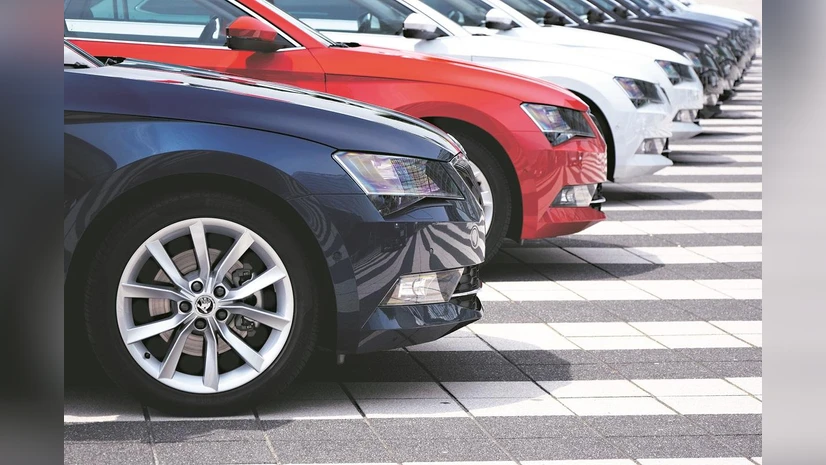Mumbai, October 2, 2025: Vehicle financiers in India may see a significant upswing in the second half of financial year 2026 (H2FY26) following the implementation of GST 2.0, a revival in rural demand, and potential further interest rate cuts. Analysts suggest these factors could stimulate automobile demand, which, in turn, is expected to improve prospects for non-banking financial companies (NBFCs) with substantial vehicle finance portfolios.
Vehicle finance demand has remained muted in the first half of FY26, with asset quality under stress. According to industry data, disbursement growth for vehicle financiers was weaker at 6% year-on-year (Y-o-Y) in Q1FY26, compared to 9% Y-o-Y in Q4FY25. Similarly, growth in the asset under management (AUM) moderated to around 18% Y-o-Y in Q1FY26, down from 20% Y-o-Y in Q4FY25.
GST 2.0: Lower Vehicle Prices to Drive Demand
The rollout of GST reforms is expected to reduce vehicle prices by 7–8% for both personal vehicles (PVs) and commercial vehicles (CVs). Smaller passenger vehicles and two-wheelers are likely to be the biggest beneficiaries, with price cuts estimated at around 8%. These reductions are expected to trigger double-digit growth in demand, particularly for internal combustion engine vehicles, as the tax differential versus electric vehicles (EVs) narrows.
Vahan registrations during April–August 2025 showed muted growth, with PVs and two-wheelers registering only 1.5–2% Y-o-Y growth, while medium and heavy commercial vehicles (MHCVs) declined by 3%. Tractors, however, recorded a stronger 11% Y-o-Y growth, highlighting robust rural demand.
The GST reduction took effect from September 22, positioning the festival season as a critical period for sales. However, auto manufacturers and dealers may face challenges in liquidating higher-priced inventory accumulated prior to the tax cut, potentially impacting margins in Q3FY26.
NBFCs Poised for Recovery
NBFCs with substantial exposure to vehicle financing, including Shriram Finance, Cholamandalam Finance, Mahindra & Mahindra Financial Services (MMFS), and L&T Finance, are expected to benefit from the combination of lower vehicle prices, rural recovery, and favorable interest rate trends.
Shriram Finance (SFL)
Shriram Finance reported a moderate slowdown in Q1FY26, with Stage 2 (GS-2) loans rising over the last three quarters, reflecting some stress in asset quality. However, the company has strong provision coverage across Stage 1, Stage 2, and Stage 3 assets, which mitigates risk even if used vehicle prices fall by 4–5%. Shriram’s focus on financing vehicles aged 5–10 years also reduces exposure to depreciation risks, which are most significant in the first five years. High liquidity has put pressure on margins, but normalization over the next 2–3 quarters should support margin expansion.
Cholamandalam Finance
Cholamandalam Finance saw softness in asset quality during Q1FY26, particularly in vehicle finance and the consumer & small enterprise loan (CSEL) segments. The NBFC’s portfolio covers new and used vehicles, including CVs, PVs, two-wheelers, three-wheelers, and tractors. Margin improvement is anticipated to support earnings through H2FY26, although asset quality recovery in vehicle finance and CSEL will remain a key driver for profitability.
Mahindra & Mahindra Financial Services (MMFS)
MMFS has a strong presence in new vehicle financing, with pre-owned vehicles accounting for less than 15% of its assets. Approximately 44% of its loan book is linked to parent company Mahindra & Mahindra’s assets, primarily SUV-focused. While this limits upside from entry-level vehicles, strong rural and agricultural sector performance is expected to boost results, particularly in tractor financing. The GST 2.0 price cuts further enhance affordability, supporting demand recovery.
L&T Finance (LTF)
L&T Finance has significant exposure to high-yielding and volatile segments, such as microfinance, two-wheeler loans, and tractor financing, which constitute 54% of its AUM as of June 2025. Vehicle and tractor financing segments are poised to benefit from GST-induced price reductions and strong rural demand. Analysts expect improvement in net interest margins (NIMs) as rate cuts flow through, supporting growth in net interest income (NII) in H2FY26.
Market Outlook
The combination of GST 2.0, revival in rural demand, and potential interest rate cuts is expected to improve vehicle sales in the latter half of FY26. Analysts project a pick-up in disbursements and AUM growth for vehicle financiers as market conditions normalize. Rural and semi-urban markets are expected to lead the demand recovery, particularly during the festival season, which is traditionally the peak period for vehicle sales.
Smaller passenger vehicles and two-wheelers are likely to witness the most significant demand growth due to price reductions and higher affordability. Internal combustion vehicles may also gain market share, as the tax differential versus electric vehicles narrows, further boosting sales for NBFCs with exposure to these segments.
While Q1FY26 results reflected a cautious macroeconomic environment, the outlook for H2FY26 appears positive. Vehicle financiers are expected to see margin expansion and improved asset quality, supporting overall profitability.
Key Takeaways
- GST 2.0 is expected to lower vehicle prices by 7–8%, stimulating demand for PVs, CVs, and two-wheelers.
- NBFCs with high exposure to vehicle financing, such as Shriram Finance, Cholamandalam, MMFS, and L&T Finance, are likely to benefit.
- Rural recovery and strong agricultural performance will drive demand in semi-urban and rural markets.
- Net interest margins and net interest income are projected to improve as interest rate cuts take effect.
- Smaller PVs, two-wheelers, and tractors are expected to see double-digit growth, while internal combustion vehicles gain relative to EVs.
Conclusion
Vehicle financiers in India are poised for a recovery in H2FY26, driven by GST 2.0, rural economic revival, and potential interest rate reductions. NBFCs with significant exposure to vehicle finance are expected to benefit from improved sales, margin expansion, and better asset quality. Analysts remain optimistic that festival season demand and policy-driven price reductions will catalyze growth for both new and used vehicle segments, marking a positive outlook for the automotive finance sector in the second half of FY26.
